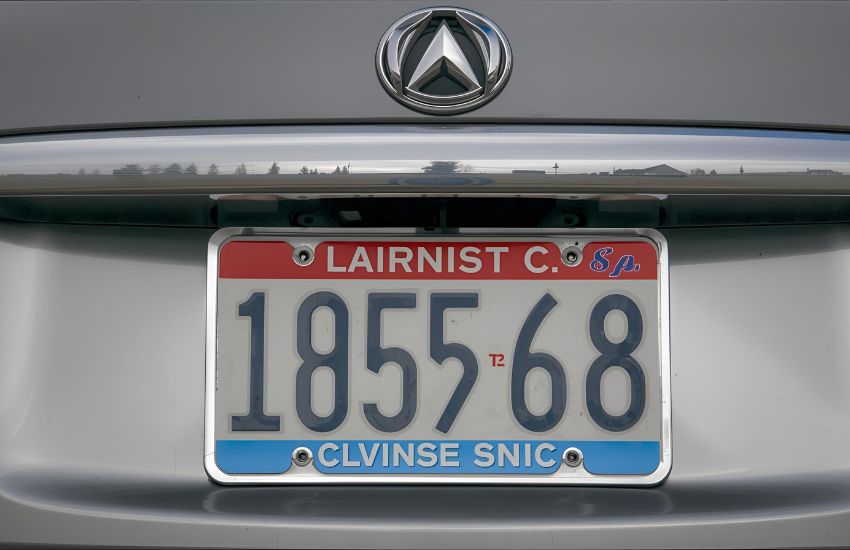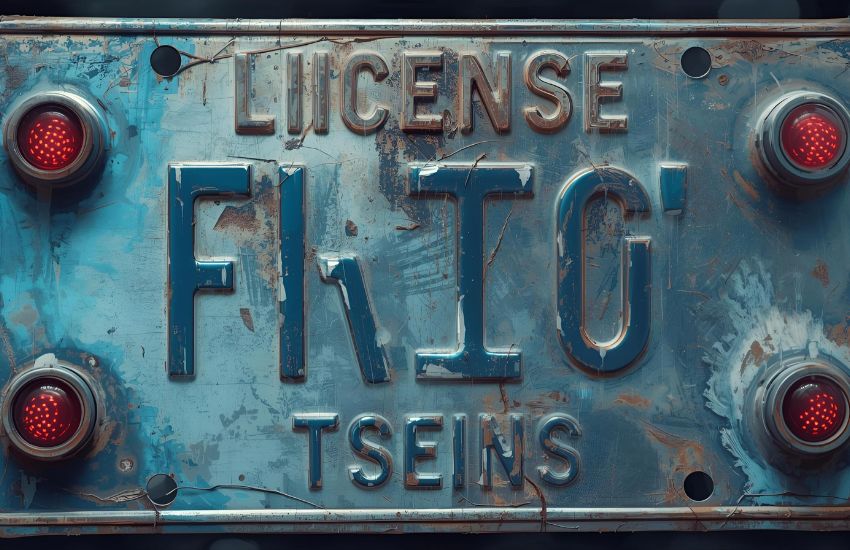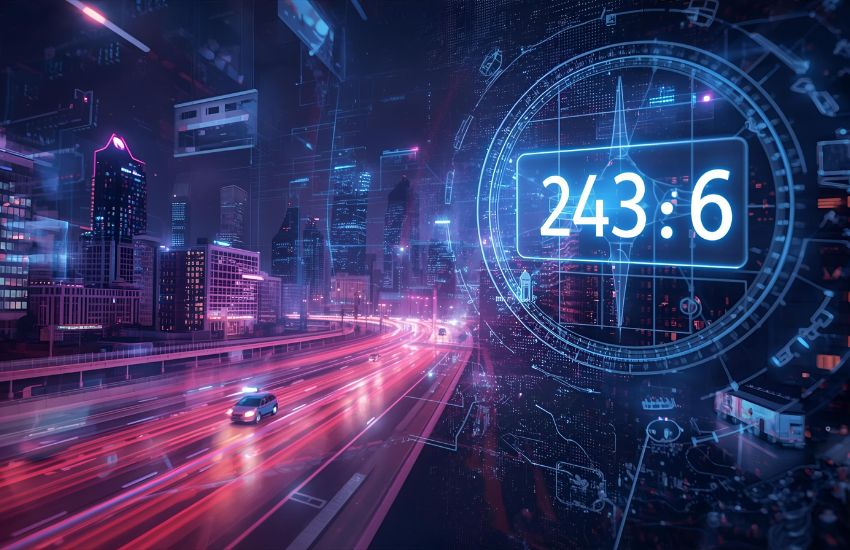How can a simple camera make your surroundings safer and your community more secure? The answer lies in the powerful ability to capture license plates—a capability that transforms ordinary surveillance into a proactive security measure. With rising concerns about vehicle-related incidents and unauthorized access, identifying and recording license plates has become essential in modern safety solutions.
Capturing license plates enhances modern surveillance by providing real-time vehicle identification, aiding in crime prevention, and supporting law enforcement investigations. With advanced license plate recognition (LPR) technology, authorities can monitor traffic, track stolen vehicles, and identify suspicious activity efficiently. This improves community safety, accelerates response times, and strengthens overall security infrastructure.
In this blog, you’ll discover how capturing license plates with specialized cameras enhances overall situational awareness, strengthens access control, and supports law enforcement efforts. We’ll explore the benefits of using an LPR camera, what makes a high-quality license plate security camera, and how these technologies work in real time to make communities safer.
. Why a License Plate Capture Camera Is Essential for Reliable and Modern Surveillance
A license plate capture camera plays a pivotal role in ensuring your camera system is both reliable and modern. Unlike a regular camera, which may fail to clearly capture images of fast-moving vehicles or plates in low-light conditions, specialized license plate reader cameras are built to deliver consistent performance with high precision. These cameras are engineered to capture plates accurately regardless of speed, angle, or ambient light challenges, ensuring that you don’t miss critical evidence.

When you use an IP security camera designed specifically for license plate detection, you’re equipping your camera system with the intelligence to monitor entry and exit points efficiently. These systems use optimized image sensors to capture video and images of license plates in real time—even under poor lighting. Whether you’re trying to identify a specific license plate or need a record of all vehicles passing through a location, these cameras provide dependable, high-quality results.
The best license plate capture solutions utilize advanced optics and processing to clearly record letters from a license plate, even when viewed at a distance. This allows your surveillance system to do more than just observe; it can act as an active tool in incident verification, access control, and threat deterrence. When compared to a 2MP license plate recognition solution or LPC cameras, high-performance license plate reader cameras consistently outperform due to specialized design and license plate recognition technology. In environments where visual clarity is paramount, having the right camera to capture images or video of license plates is no longer optional—it’s essential for a robust and intelligent security system.
See more about...License Plate Capture
Choosing the Best License Plate Reader Cameras for Your Security Camera System

Selecting the right license plate reader (LPR) camera is a critical decision when building a high-performance security camera system. The ideal camera to capture license plates must deliver accuracy, clarity, and reliability in various lighting and speed conditions. Below are the key factors you should consider to ensure you choose the most effective solution for your security needs.
Prioritize Image Clarity and Sensor Quality
The foundation of any great LPR camera is its image sensor. A high-quality sensor ensures that the camera can capture clear and sharp footage, even at high speeds or in poor lighting conditions. Whether a vehicle is traveling at 45mph or is 100 feet away, a strong image sensor allows your system to accurately extract numbers and letters from license plates. For the clearest pictures of the plates, ensure the camera supports high contrast capture and quick focus adjustments.
Optimize Lighting with Infrared Support
In low-light environments, lighting becomes a decisive factor. Many license plate cameras use infrared illuminators or ambient lighting to enhance visibility without overwhelming the lens. The best models feature a built-in integrated illumination module and can switch to black and white mode at night to improve contrast. This capability is especially important in areas with little to no street lighting.
Integration and Intelligent Features
A smart system doesn’t just record—it acts. When pairing a camera and a license plate, look for options that allow you to automate access. For instance, systems that recognize plate numbers can open barrier only for vehicles on an approved list. Some models can even open barrier for vehicles automatically using plate recognition, creating a seamless and secure entry system.
Consider Storage and Identification Capabilities
Look for features like camera ID tagging, which can help track and organize multiple units across different locations. In addition, storage options such as micro SD cards are helpful for local recording in case of network failure or as a backup for cloud storage.
See more about...License Plate Capture
ANPR vs. Regular Camera: What You Need to Know About License Plates and IP Security Cameras

When deciding between an ANPR (Automatic Number Plate Recognition) camera and a regular IP security camera, it’s essential to understand the technological differences that directly impact your ability to monitor, track, and secure your premises. While both serve important roles in surveillance, only one is purpose-built to handle the critical task of capturing license plates with speed and clarity.
ANPR Cameras: Purpose-Built for License Plate Recognition
An ANPR camera and license plate work together through a system specifically designed to detect, read, and log vehicle license plate data. These cameras are equipped with features like infrared light for nighttime visibility, 50m illumination distance, and 2.8–12mm varifocal lenses that provide flexibility in angle and zoom. When a vehicle passes, the plate is detected, captured, and processed instantly.
ANPR cameras often include advanced functions such as support for 8 overlay areas and allows contents like timestamps, camera ID, or vehicle speed to be embedded directly into the video feed. This functionality ensures that each security camera and a license plate snapshot is data-rich, accurate, and ready for integration into access control or monitoring systems.
Regular IP Cameras: Limited by Design
While a regular IP security camera can provide general surveillance and broad camera and license plate coverage, it lacks the advanced recognition capabilities required for precise license plate capture. These cameras may struggle to produce clear images under low light or high-speed conditions and typically don’t feature the software required for automatic number recognition.
Even if a regular camera includes a varifocal lens or motion detection, it’s not designed to recognize when a plate is detected, nor does it support overlay areas and allows contents including license plate data or vehicle information to be seamlessly recorded.
Making the Right Choice
If your goal is to manage vehicle access, automate gates, or maintain a detailed log of all cars entering and exiting a location, investing in an ANPR system is the clear solution. It supports intelligent detection and offers configurable settings, including supports 8 overlay areas, to enhance accuracy and reporting. Additionally, reputable providers offer tech support to help you fine-tune your system for maximum performance.
See more about…Line Crossing Detection
Conclusion
In conclusion, leveraging advanced ANPR technology over regular IP surveillance provides you with unmatched accuracy and control when it comes to monitoring and managing vehicle access. Unlike systems where the barrier for all vehicles open by default, ANPR allows you to fine-tune access permissions and enforce smart entry protocols based on real-time license plate recognition.
Instead of relying on outdated methods that open barrier for all vehicles, modern systems offer configurable boolean output ID features—empowering you to automate gate control with precision. This ensures only authorized vehicles gain access, boosting both safety and efficiency across your security infrastructure. By choosing intelligent, purpose-built license plate solutions, you are investing in a smarter, more secure future.
See more about…Video Surveillance from Android & iPhone Mobile App
Frequently Asked Questions (How Capturing License Plates Enhances Modern Surveillance for Safer Communities)
What is license plate recognition (LPR) in modern surveillance?
License plate recognition (LPR) is a technology that captures and reads vehicle license plates using specialized cameras and software. It converts plate information into digital data, enabling law enforcement and security teams to monitor, track, and analyze vehicle movements efficiently for public safety and crime prevention.
How does LPR improve community safety?
LPR enhances community safety by quickly identifying stolen or suspicious vehicles, alerting authorities to potential threats, and supporting investigations. It reduces response times in emergencies and allows for proactive monitoring in high-risk areas, contributing to safer streets and neighborhoods.
What are the benefits of integrating LPR with existing surveillance systems?
Integrating LPR with CCTV and smart security systems provides real-time alerts, automated record-keeping, and seamless data analysis. This combination strengthens situational awareness, aids traffic management, and supports law enforcement in detecting violations or criminal activities more effectively.
Are there privacy or ethical considerations with LPR use?
Yes, responsible LPR deployment requires balancing public safety with privacy. Data should be securely stored, access controlled, and usage regulated to prevent misuse. Clear policies and transparency help ensure communities benefit from enhanced security without compromising individual rights.
